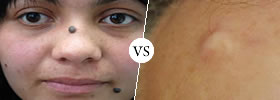Difference between Terrace, Balcony and Roof
Key Difference: Terraces are structures that are most commonly found in buildings or multiple storied houses. These are flat, fully supported space on upper floors that allow room for people to walk, sit and various other activities. Balcony is a structure that is a platform that is projected from the wall of a building or house and enclosed with balusters or railings. These are cantilevered, which means they are supported using columns or brackets, rather than beams. A roof if a covering placed on any structure that protects from weather conditions or invasion of other living things. Roofs are basically a cover that is placed on top of the walls that keeps birds, animals, rain, snow and other things out of the house.
 Terrace, balcony and roof are three words that have a lot to do with structure of a building. These terms can often become confusing as the meanings have becoming blurred. Terraces, balconies and roof are completely different architectural structures and should not be confused as the same. Sometimes the meanings can be combined as there are many roof terraces, which combine the purpose of a roof with that of a terrace.
Terrace, balcony and roof are three words that have a lot to do with structure of a building. These terms can often become confusing as the meanings have becoming blurred. Terraces, balconies and roof are completely different architectural structures and should not be confused as the same. Sometimes the meanings can be combined as there are many roof terraces, which combine the purpose of a roof with that of a terrace.
Terraces are structures that are most commonly found in buildings or multiple storied houses. These are flat, fully supported space on upper floors that allow room for people to walk, sit and various other activities. Terraces must be decently sized that allows people walking room or sitting room and should be fully supported by beams and pillars. Terraces are parallel to the ground and must also be open to the sky. Terraces can offer many different benefits such as ability to sunbathe, outdoor meals, barbeques, gardening, pools, hot tubs, etc. Terraces can be fully or partially covered by semi-permanent structures such as umbrellas or tarp coverings. The term ‘terrace’ also has significance in geology and agriculture referring to a narrow stretch of land, having a steep slope facing a river, lake or sea.
 Balcony is a structure that is a platform that is projected from the wall of a building or house and enclosed with balusters or railings. These are cantilevered, which means they are supported using columns or brackets, rather than beams. Balconies are usually smaller compared to terraces and only allow standing or sitting room. Balconies are connected to the floor and are an extension from the same floor. Balconies are usually connected using full-length windows rather than door, while some places may refer doors. The word ‘balcony’ is derived from Italian word ‘balcone’, meaning “scaffold”.
Balcony is a structure that is a platform that is projected from the wall of a building or house and enclosed with balusters or railings. These are cantilevered, which means they are supported using columns or brackets, rather than beams. Balconies are usually smaller compared to terraces and only allow standing or sitting room. Balconies are connected to the floor and are an extension from the same floor. Balconies are usually connected using full-length windows rather than door, while some places may refer doors. The word ‘balcony’ is derived from Italian word ‘balcone’, meaning “scaffold”.
There are many different types of balconies including the Maltese balcony and the French balcony. The Maltese balcony is a wooden closed balcony that projects from the wall. The French balcony is not even a balcony; it is actually a false balcony. French balconies do not protrude from the wall but just have balustrade at the front and have windows or doors that open into that little place. French balconies are also known as Juliet balconies. Some balconies are also used for special purposes such as the balcony at St. Peter’s Basilica where the Pope address the public. Another balcony was the upper sitting area at old theatres, which separated the lower seats from the upper cheaper ones.
 A roof if a covering placed on any structure that protects from weather conditions or invasion of other living things. Roofs are basically a cover that is placed on top of the walls that keeps birds, animals, rain, snow and other things out of the house. There are many different types of roofs that are available including letter box, cathedral, stadium or terrace. In some countries, a roof can also be used as a make-shift workstation where women can dry clothes, mill/grind grains and perform other work.
A roof if a covering placed on any structure that protects from weather conditions or invasion of other living things. Roofs are basically a cover that is placed on top of the walls that keeps birds, animals, rain, snow and other things out of the house. There are many different types of roofs that are available including letter box, cathedral, stadium or terrace. In some countries, a roof can also be used as a make-shift workstation where women can dry clothes, mill/grind grains and perform other work.
Roofs are designed according to the purpose in mind, it has three elements that required addressing: the kind of material used, the kind of construction performed and the durability of the roof. Roofs can be made using leaves, hay, glass, shingles, concrete, etc. The construction is how the roof is designed: slanted, flat, dome-shaped, etc. Now the durability decides what kind of things the roof can protect against; rain, hail, snow, birds, animals, etc. Roofs are usually supported by strong beams if the roof is pitched, and pillars if the roof is straight. A roof can also be used as a terrace, where the roof is flat and has an entryway built into it. The open top part of the roof can double as a terrace, these are known as roof terraces.
Image Courtesy: gardenbuilders.co.uk, ironguys.com, robbinsroofinginc.com









Add new comment